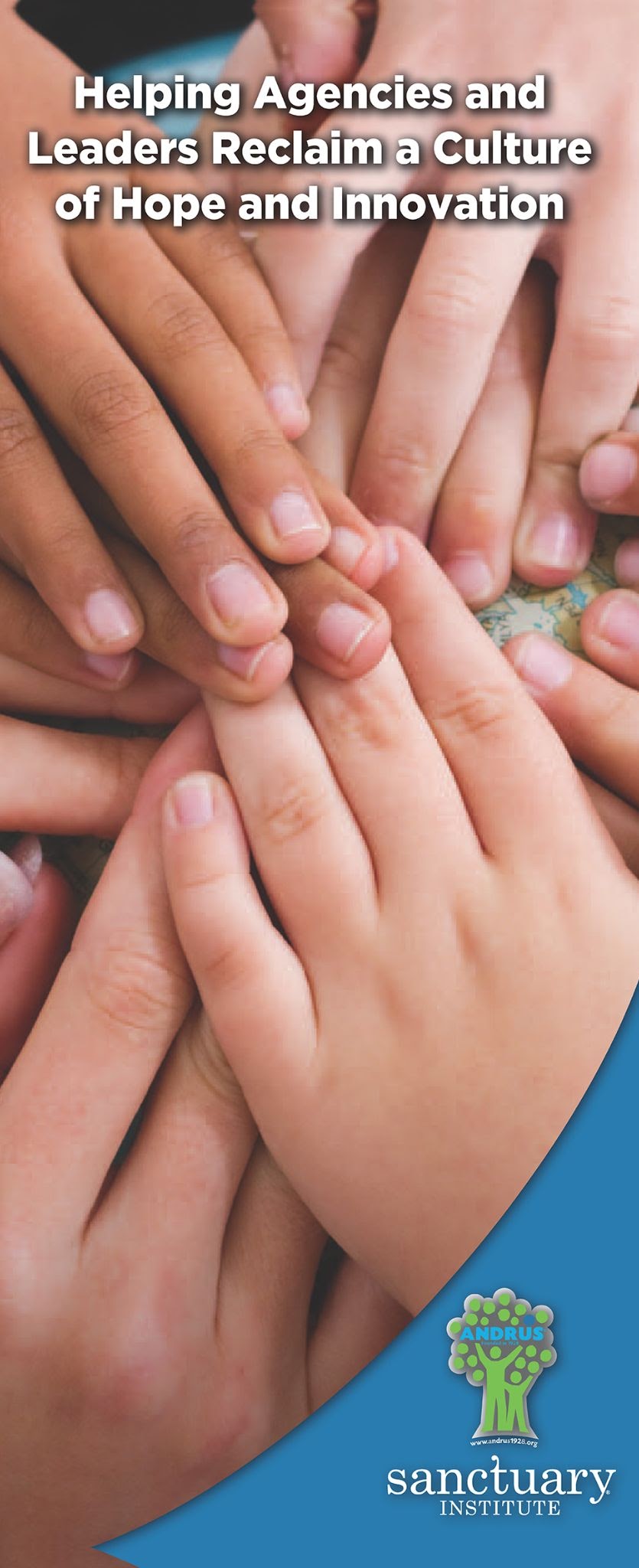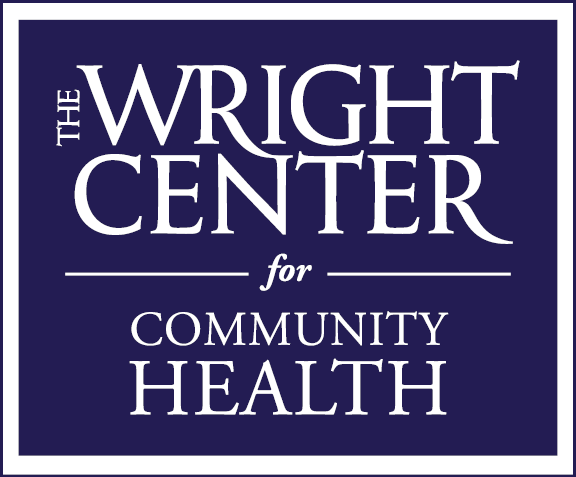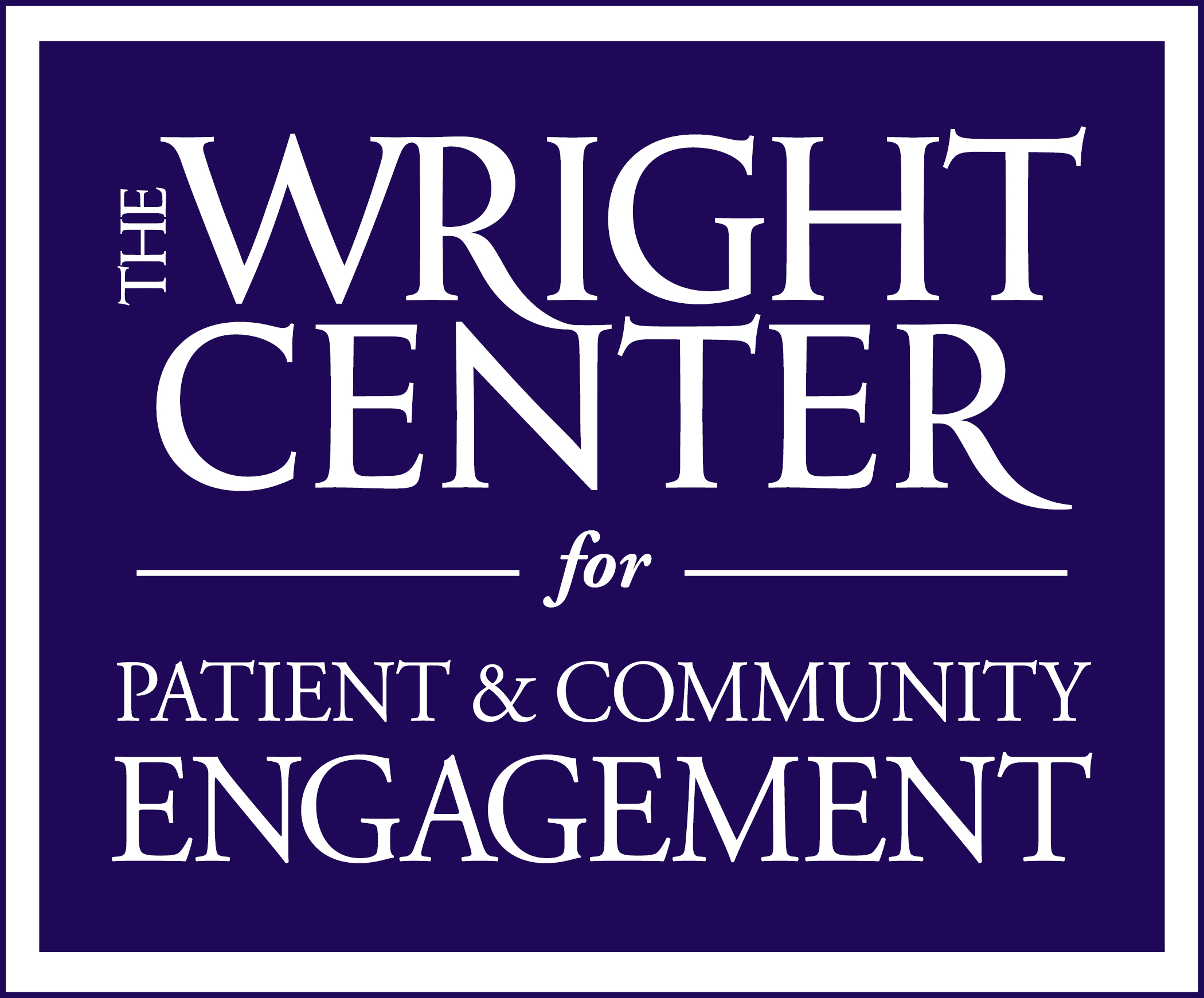Sanctuary Model

Program improves resilience, mental health and wellness
The Wright Center for Community Health and The Wright Center for Graduate Medical Education (collectively, The Wright Center) began working in mid-2022 toward becoming certified as a Sanctuary organization. The Sanctuary Model is an evidence-supported template for promoting safety and recovery from chronic stress and adversity by teaching trauma-informed approaches to organizational development. The Sanctuary Model recognizes that just as people are susceptible to adversity, organizations themselves are equally as vulnerable.
At its core, the Sanctuary Model is based on an understanding of trauma and how it affects individuals as well as whole organizations and systems.
“We understand how the COVID-19 pandemic has exacerbated trauma in the health care workforce,” said Meaghan Ruddy, Ph.D., senior vice president of Academic Affairs, Enterprise Assessment and Advancement, and Chief Research and Development Officer. “It is irrefutable how the ripples of trauma continue to impact the ability of amazing and compassionate individuals to show up as their best selves. In order to do our best to sit in this truth and address these issues head-on, The Wright Center is investing in this model for the betterment of our workforce and the people and communities we serve.
“We made the commitment to develop The Wright Center into a Sanctuary-certified enterprise in the hopes that doing so will create opportunities for not just survivable, but thriving environments including improved employee retention, satisfaction and communication,” Ruddy added.
To download or read a brochure about ANDRUS’ Sanctuary Institute and Sanctuary Model, please click on view brochure button. To receive regular updates from the Sanctuary Institute, please go to thesanctuaryinstitute.org and join the mailing list.
The process began in early August 2022 with a site visit from Jaye Holly, a Sanctuary Institute faculty member who will be working closely with The Wright Center. During her initial trip to Scranton, she met with many employees at all levels of the organization. They participated in frank discussions about the work needed to make Sanctuary real at The Wright Center, and a report based on the visit will be prepared and shared.
The Wright Center will create milestones to realize over the next 36 months. The organization also will host up to two five-day Sanctuary immersion training sessions. The training sessions will be for 30-40 people each, engaging as many employees as possible and diving into the work of establishing and maintaining a trauma-informed environment. Participants will become the Core Implementation Team, which will champion the work of embracing the Sanctuary Model.
The Core Implementation Team will include members of the executive team and workers from every department, so Sanctuary can be made real at every level of the organization. If you want more information or want to become directly involved with the Core Implementation Team, please contact Shannon Osborne at [email protected].
Sanctuary Model certification symbolizes an organization’s commitment to providing trauma-informed clinical and educational environments for the people they serve and the employees who serve them. Once The Wright Center receives Sanctuary certification, the organization is required to submit to a re-evaluation every three years to maintain it. Certification is designed to promote, sustain and strengthen an enterprise’s commitment to the maintenance of a trauma-informed culture for all of its stakeholders.
The Wright Center recognizes that trauma comes in many forms and is different for everyone. As a result of trauma, our behavior and ability to cope may be impaired. The trauma-informed Sanctuary Model serves to strengthen interpersonal skills through teaching emotional management techniques that help to build cognitive abilities and provide the tools with which individuals can build their social connection skills and in turn how those skillsets can be used to create better, more functional health care and education delivery organizations.
The Sanctuary Model consists of two key components: Creating a therapeutic environment to help people foster healthy attachments, and developing the ability to recover from emotional, social, cognitive and behavioral trauma. Overall, the Sanctuary Model helps organizations maintain a safe, nurturing environment that provides a range of therapeutic interventions for corrective growth. The Sanctuary Model offers a restorative approach for human services organizations. It was established in the Philadelphia, Pennsylvania, area in the early 1980s by Dr. Sandra Bloom and her colleagues. Over time, the model has been adopted for a wide range of programs and organizations.
The Sanctuary Institute now offers training and support to more than 275 organizations around the world. The Wright Center will utilize the Sanctuary Institute’s Sanctuary Model as a blueprint for clinical and organizational change.
What is the Sanctuary Model?
It is an evidence-informed model that is designed to facilitate the development of organizational cultures that counteract the wounds suffered by traumatic experiences and extended exposure to adversity.
The Sanctuary Model is organized around four pillars: Trauma theory, S.E.L.F., Seven Commitments and Sanctuary Toolkit.
- Trauma theory: Traumatization occurs when both internal and external resources are inadequate to cope with an external threat.
- S.E.L.F.: Stands for Safety, Emotions, Loss and Future. It works as a way of structuring treatment and interventions, and creates a common language among employees to help with communication and creating a mutual understanding.
- Safety: Physical – safe from harm; psychological – safe with yourself; social – safe with others; Moral – safe and consistent with your conscience, beliefs and values.
- Emotions: Giving words to feelings; neither suppressing or expressing, but managing; trading in actions for words.
- Loss: Grieving, saying good-bye, moving on and refraining from reenactment.
- Future: How can things get better? Making better and/or different choices, vision and imagination.
- Seven Commitments: Each serves as goals that are related to trauma resolution.
- Nonviolence: Living safety outside (physical), inside (emotional), with others (social) and doing the right thing (moral).
- Emotional intelligence: Managing feelings so we do not hurt ourselves or others.
- Social learning: Respecting and sharing ideas of our peers and teams.
- Open communication: Saying what we mean, but not being mean when we say it.
- Social responsibility: Together we accomplish more; everyone contributes to the organizational culture.
- Democracy: Shared decision-making among employees.
- Growth and change: Creating hope for our patients and ourselves.
- Sanctuary Toolkit: Provides the tools to help the organization achieve its goal of creating Sanctuary for employees and patients.
- Community meetings: The first step of trauma recovery by creating safety in the group.
- Safety plans: A list of activities an individual can choose when feeling overwhelmed so she/he can avoid engaging in unsafe behavior.
- Self-Care Plan: To be practiced regularly and proactively, such as exercise, proper diet, balance of work, play and rest, social activities, social activism, etc.
- Professional: A healthy balance professionally involves education and awareness about the effects of trauma on self and others, breaks during the work day, hope in the ability of people to change and grow, maintain collegiality, etc.
- Societal: General public and professional education about PTSD and traumatic stress, become involved in our active community, be socially active, seek legislative reform through political action, share and transform suffering through the arts, etc.
- Organizational/work setting: Accept stressors as real and legitimate, impacting individuals and groups as-a-whole; work in a team; alter physical setting to be more secure, safe and soothing; obtain management support; maximize collegiality; and seek solutions, not assign blame.
For more information about the overall implementation process and the standards for certification, please click on the view standards button.
History?
The Sanctuary Model was developed in the early 1980s by Dr. Sandra Bloom and colleagues in Philadelphia, Pennsylvania, as a result of treating people who were living with outcomes of traumatic life experiences. According to a paper they authored in 2013, the team built “on the concept of therapeutic communities, in which staff and clients collectively participate in creating a system of healing,” and combined with the work of S.M. Silver, “who described ‘sanctuary trauma’ as expecting a welcoming and healing environment and finding instead more trauma, Bloom and her colleagues formed The Sanctuary, a trauma-specific program for adult survivors. The Sanctuary Model, an outgrowth of The Sanctuary, is a blueprint for clinical and organizational change that promotes safety and recovery from adversity through the active creation of a trauma-informed community.” In other words, patients living with the outcomes of trauma were finding more trauma in places where they should have found only healing, because the clinical teams and environments were themselves traumatized. The model has since been adapted and successfully used in a variety of settings such as residential treatment for youth, juvenile justice programs, homeless and domestic violence shelters, as well as a range of community-based, school-based and mental health programs. The Sanctuary Model is not one specific program that is instituted the same way in every setting. Instead, it is a shift in the framework of the organization to become trauma-informed and promote healing.
Why Sanctuary?
Using the Sanctuary Model has enabled organizations to:
- Create a truly collaborative treatment environment.
- Work more effectively and therapeutically with your traumatized clients
- Improve treatment outcomes
- Build high-functioning multidisciplinary teams
- Improve staff morale
- Increase employee retention
- Reclaim the commitment upon which the organization was built
For additional questions please email:
Meagan Ruddy, Ph.D.
Senior Vice President Academic Affairs, Enterprise Assessment and Advancement,
and Chief Research and Development Officer
[email protected]
Click on the organization below on whose board you serve to see metrics, goals, and accomplishments specific to that organization.
Once you've had the opportunity to do so, check out Dr. Thomas-Hemak's closing thoughts in the video at the bottom of the homepage.
Input for Executive Committees
"*" indicates required fields
Questions for management
"*" indicates required fields




